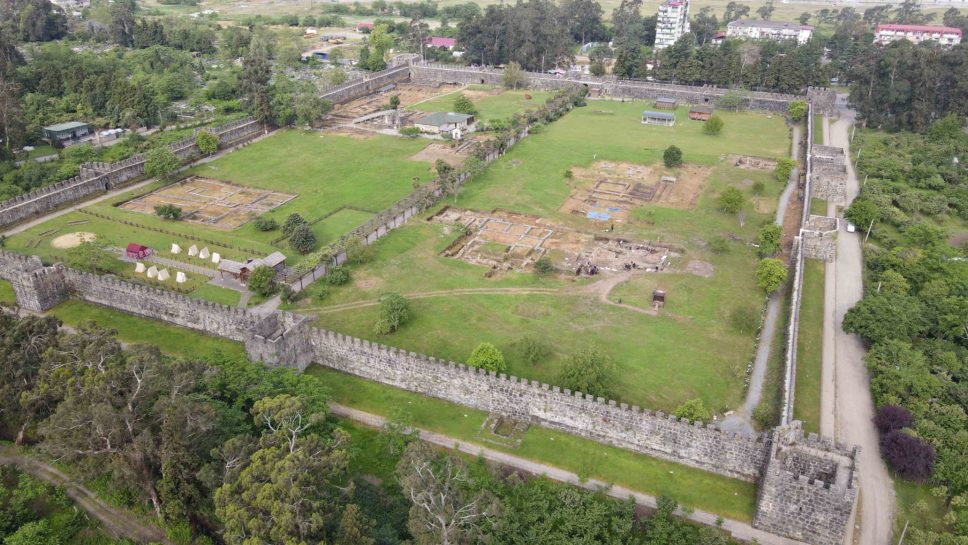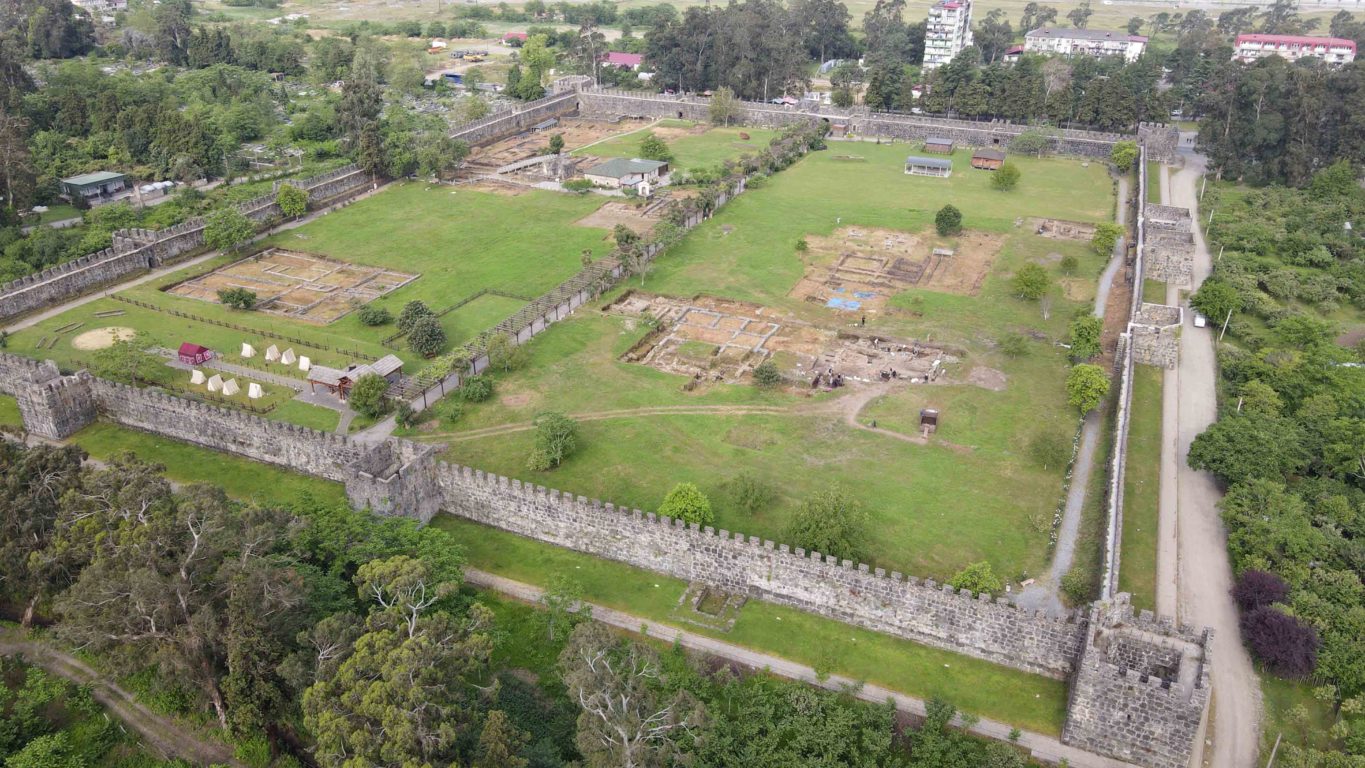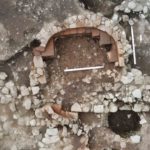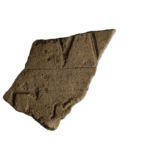This autumn, the Polish-Georgian Gonio-Apsaros expedition completed the 10th season of excavations at the Roman fort of Apsaros, south of Batumi on the Black Sea coast of Georgia. The fieldwork of the team headed by Dr. Radosław Karasiewicz-Szczypiorski (Polish Centre of Mediterranean Archaeology, University of Warsaw) and Prof. Shota Mamuladze (Gonio-Apsaros Archaeological and Architectural Site) has delivered several interesting discoveries.
One is a fragment of a Latin inscription carved on a thin stone slab. Although only fragments of two letters and a distinctive mark separating the words have survived, several noteworthy conclusions can be made based on this artifact. Only one other inscription is known from the Apsaros fort. It was executed in poor-quality local stone, which affected both the workmanship and the preservation of the text.
Based on this observation, Radosław Karasiewicz-Szczypiorski suggested that the material required for making official inscriptions and other complex stonework, such as marble, or high-quality limestone, was brought to Apsaros from afar. Fragments of these stone varieties are rare at the site. Their scarcity is certainly the result of their use in later periods as valued raw materials for the production of lime needed for construction purposes.
Another small but uncommon find is an engraved gem made of carnelian which was originally set in a finger ring. An unknown craftsman carved the head of Minerva. the Roman goddess of war and patron of soldiers, in finely crafted relief. The object can be dated to the early 2nd century CE (identification and dating by Dr. P. Gołyźniak). – The high quality of the gem found in the Apsaros fort allows us to assume that its owner was not an ordinary soldier. Probably, the precious ring was worn by one of the officers, perhaps even the garrison commander, – says Karasiewicz-Szczypiorski.
The discovery of a pottery kiln in the central part of the fort also merits special attention. Previously, an installation of this kind was discovered by the Georgian team outside the perimeter wall of the fort. The kiln excavated this season had been built on the ruins of a building that housed Roman army headquarters (principia) which was probably destroyed in an earthquake in the late 30s of the 2nd century CE. The kiln may have been used to produce amphorae for transporting wine – vessels of this type were found inside. – Of course, further research will be necessary, including physicochemical analysis, but it can already be assumed that wine production activities were carried out at the Apsaros fort, possibly after the partial evacuation of the garrison, – says the project director.
In this context, it is worth mentioning the discovery of a winepress, announced last year by the same research team [link]. The press, located a few hundred meters from the fort, is also dated to the 2nd–3rd centuries CE. It provided the first evidence of local wine production during the Roman period. Therefore, it can be assumed that the surrounding vineyards, the winepress, and the pottery workshops producing amphorae were elements of a single economic organism that almost certainly worked for the needs of the Roman army.
More about PCMA UW research in Gonio-Apsaros.
-
Remains of a kiln for firing pottery vessels, probably amphorae // Pozostałości pieca do wypału ceramiki, prawdopodobnie amfor (Photo: Oskar Kubrak/PCMA UW)
-
Gem made of carnelian with a depiction of the Roman goddess Minerva / Gemma z Karneolu z przedstawieniem rzymskiej bogini Minerwy (Photo: Oskar Kubrak/PCMA UW)
-
Fragment of a Latin inscription found at the headquarters (principia) of the Apsaros fort // Fragment inskrypcji łacińskiej z Gonio-Apsaros (Photo: Rafał Bieńkowski/PCMA UW)





